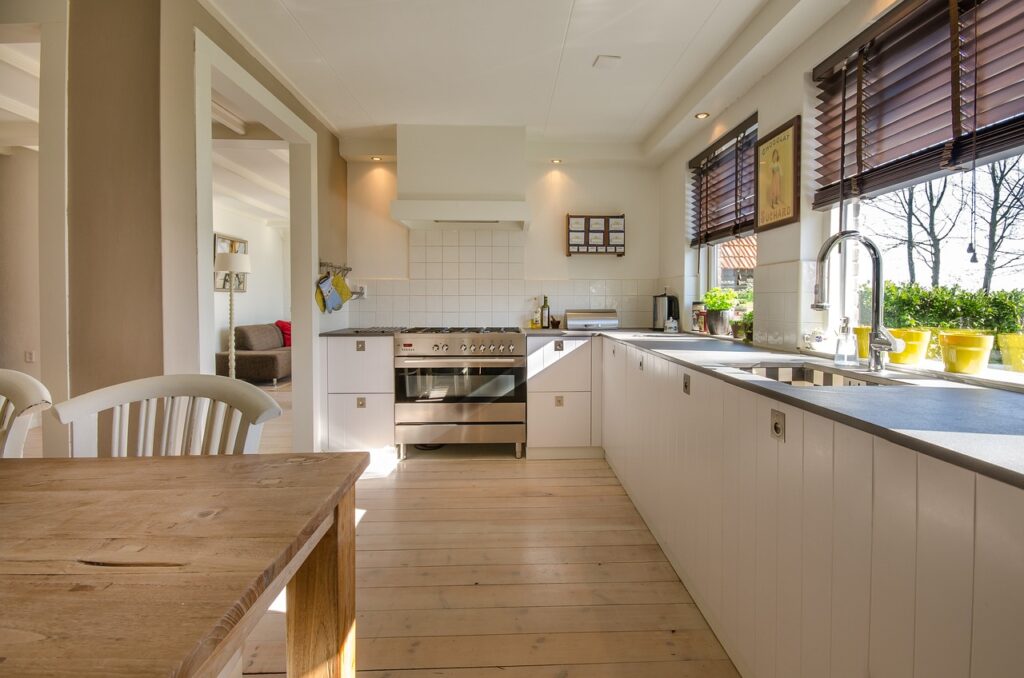Hardwood floors offer a timeless and natural appeal that enhances the look and value of any home. They come in various types, including solid and engineered options, each suited to different installation needs and lifestyles. Choosing the right flooring hardwood floors involves considering factors like wood species, durability, finish, and installation method to ensure both beauty and longevity.
Quality hardwood floors can withstand daily wear while adding warmth and character to a space. They are available in a range of colors, grains, and textures, allowing homeowners to match their flooring to personal style and regional climate conditions. Recognizing these elements helps in selecting floors that maintain their appearance and performance for years.
For those considering hardwood flooring, understanding the differences between species such as oak, maple, and birch, along with types like solid versus engineered wood, is essential. This knowledge guides buyers in making an informed decision that balances aesthetics, cost, and maintenance requirements.
Types of Hardwood Flooring
Flooring Hardwood floor varies primarily in construction, wood species, and finishing. Each aspect affects durability, appearance, and maintenance, influencing the best choice for different rooms and lifestyles.
Solid Hardwood vs. Engineered Hardwood
Solid hardwood is made from a single piece of wood, typically ¾ inch thick. It offers excellent durability and can be sanded and refinished multiple times. It performs best in stable indoor environments and may react to moisture, making it less ideal for basements or humid areas.
Engineered hardwood consists of a real wood veneer layer over plywood or high-density fiberboard. This construction makes it more resistant to temperature and humidity changes. It is easier to install over concrete and on lower levels. Engineered flooring tends to be less expensive and more versatile but can only be refinished a limited number of times.
Popular Wood Species Used
Common hardwood species include oak, maple, hickory, walnut, and cherry. Oak is favored for its hardness and prominent grain, suitable for both traditional and modern decor. Maple is dense with a light, smooth grain, often chosen for its clean look.
Walnut and cherry provide richer, darker tones with distinctive grains that add warmth. Hickory is very hard and offers a rustic, varied color range. Each species has different hardness levels, affecting wear resistance and suitability for high-traffic areas.
Finishes and Surface Textures
Hardwood floors come with various finishes that affect appearance and protection. Common finishes include polyurethane, which offers a durable, shiny surface, and oil-based finishes, which penetrate wood to enhance its natural look but may require frequent maintenance.
Surface textures vary from smooth, satin, to distressed or hand-scraped styles. Textured surfaces can hide scratches and wear better, making them practical for busy homes. Matte finishes tend to reduce glare and highlight wood grain without a shiny surface. The choice of finish and texture impacts longevity and cleaning requirements.
Installation and Maintenance
Proper installation methods ensure durability and aesthetic appeal, while routine care preserves the wood’s condition over time. When damage occurs, timely repairs and refinishing restore the floor’s original look and function.
Professional Installation Methods
Hardwood floors can be installed using several techniques, including nail-down, glue-down, and floating (click-lock) methods. Nail-down and staple-down are best for solid hardwood on plywood subfloors, providing strong, lasting attachment.
Glue-down is common for engineered hardwood and is suitable for concrete or other subfloors. Floating floors, which don’t attach to the subfloor, are easier for DIY and allow for slight movement due to humidity.
Professional installers focus on proper subfloor preparation, ensuring it is clean, dry, and level. Acclimating wood planks to the home’s humidity for several days prevents warping or gaps. Precise measuring and spacing reduce future issues like buckling.
Routine Care and Cleaning
Regular cleaning helps maintain hardwood floors and extend their lifespan. It begins with daily dusting or sweeping to remove grit that can scratch the surface. Using a microfiber mop or vacuum with a hardwood floor attachment is recommended.
For deeper cleaning, damp mopping with a hardwood-specific cleaner is appropriate. Avoid excessive water or harsh chemicals, which can damage the wood and finish.
Placing mats at entrances prevents dirt buildup. Furniture pads reduce dents and scratches, and controlling indoor humidity between 30-50% minimizes wood movement and warping.
Repairing and Refinishing
Minor damage such as scratches or dents can often be repaired with wood filler or touch-up kits matching the floor color. For larger areas or worn finishes, sanding and refinishing restore surface integrity.
Refinishing involves sanding the top layer, applying stain if desired, then sealing with polyurethane or oil-based finishes. This process may be needed every 7-15 years depending on wear.
It is important to inspect floors regularly for damage and address issues promptly to avoid costly replacements. Professional help is advisable for extensive repairs or refinishing jobs.
